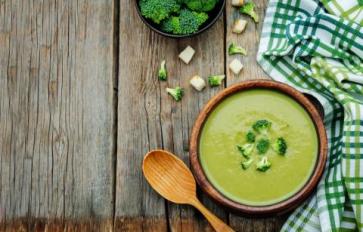
Join Basmati.com every week for a Q&A session with one of Basmati’s practitioners, Melissa Hill (FDN-P)! We know that there is a lot of confusing information out there, which can make applying health advice overwhelming. Sometimes, it’s best to ask a practitioner directly, so each week we’ll cover a common health question!
Do you have a health question you’d like to ask? Write to us at editors [at] basmati [dot] com () and your question could be chosen and featured in a future column!
Q. What can I do about joint pain? How can I keep my joints and tendons healthy?
A. Pain is a message from our body. It is trying to get our attention. Pain can arise when we are taking part in an activity, or when we have a way of moving in the world that is not in alignment with our self, or when we are out of balance in some way. From an Ayurvedic perspective, joint pain issues are usually due to a Vata imbalance. Treatment includes a holistic approach, taking into account the person’s particular situation that led to joint pain occurring in order to determine appropriate treatment. There are many factors, both internal and external, that could play a role.
Physically, pain usually means there is inflammation in the area. Structural misalignment or biochemical buildup due to poorly digested food or one’s detoxification systems failing to remove metabolic waste. These poorly digested compounds can settle into the joints causing pain, weakening the structures, and blocking the micro circulation, inhibiting the flow of prana circulation and nutrients to enter to heal.
If trauma or damage has occurred to the internal structures, ligaments, or tendons in the joint, a cycle of inflammation and pain can develop as the body sends inflammatory response chemicals to the area to try to repair and rebuild it. This influx of activity in the particular area can lead to more inflammation in the area, resulting in swelling, pain, and decreased range of motion, generating a perpetual cycle of pain, inflammation, and restricted movement. To break the cycle, it can be helpful to introduce anti-inflammatory foods, herbs, and/or modalities to reduce swelling and allow movement of blood and energy through the affected area again. Physical modalities like ice, cryotherapy, foam rolling to release fascia, and corrective stretching and strengthening to fix musculoskeletal imbalances can also help.
Energetically, when there is pain, there is stuck energy. Stuck or blocked energy flow though the affected area could come from physical blockages, stored emotions, or genetic influences. In order for healing to occur, energy flow through the area needs to be restored. Many practitioners work specifically with people in helping to remove blocks in their energy and restore flow.
Ayurvedic treatment for healing and care of joints includes massage with herbalized oils or marma therapy. Find a practitioner near you if you are interested in learning more about the specifics or getting a treatment done. Internally, taking some herbs to reduce inflammation, aid tissue healing, and reduce pain may be suggested. Herbs such as guggul, ginger, turmeric, MSM, and eucommia can be helpful for reducing inflammation and allowing deep tissue healing.
General foundational supplements like magnesium, vitamin D, and omega-3s should be considered as well. Commonly, insufficient levels of these nutrients can be a root cause of chronic muscle and joint pain in the body. Magnesium plays a role in many body processes, including maintaining normal muscle and nerve function. You can get magnesium in your diet from leafy greens and nuts or add it via supplements if deficient.
Other common contributors to chronic joint pain come from improper diet. This could be consumption of too many inflammatory foods or specific food sensitivities. Many times, consumption of inflammatory proteins like gluten, or sensitivity to nightshades like tomatoes, potatoes, eggplant, and peppers are major contributors. Removing the potential inflammatory foods from your diet and then keeping a food diary to track how you feel in response can be a great help. Alternatively, you can work with a practitioner to help you identify these problem foods and get guidance for appropriate food and lifestyle adjustments.








